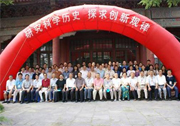| 英文摘要: |
Since the Song and Yuan Dynasties (from the 10th to 14th century), aiming to provide a good growth environment for rice growth and increasing the rice yield, Chinese traditional rice cultivation had created a set of skills based on transplanting rice seedling, and complemented with the soil preparation of plowing, harrowing, pulverizing, weeding, and baking. This set of effective traditional rice cultivation techniques constituted the cornerstone of China’s economic development in the past millennium. During the Ming and Qing Dynasties (from the 14th to the 20th century), rice production achieved well-balanced development, while rice production in times of natural disasters were becoming more frequent. How to cope with natural disasters, and enhance precautionary capabilities became the new direction of technology development of successive rice development. A new direction adjustment is required to take social and economic factors into account in addition to natural factors. Report to My Villagers, a newly found essay written by Xu Guangqi (1562–1633), a famous scientist, statesman and one of the earliest Catholics in the end of the Ming Dynasty, was of important reference value to the study of agricultural history in Jiangnan area during the Ming and Qing Dynasties. Its core issue is how to restart rice production after the flood. This paper interprets and studies based on its background related to varieties, sowing, seedling, transplanting, buying seedling, irrigation and drainage, agricultural restructuring and other problems, providing a new understanding for the study of Jiangnan’s economic history. |





